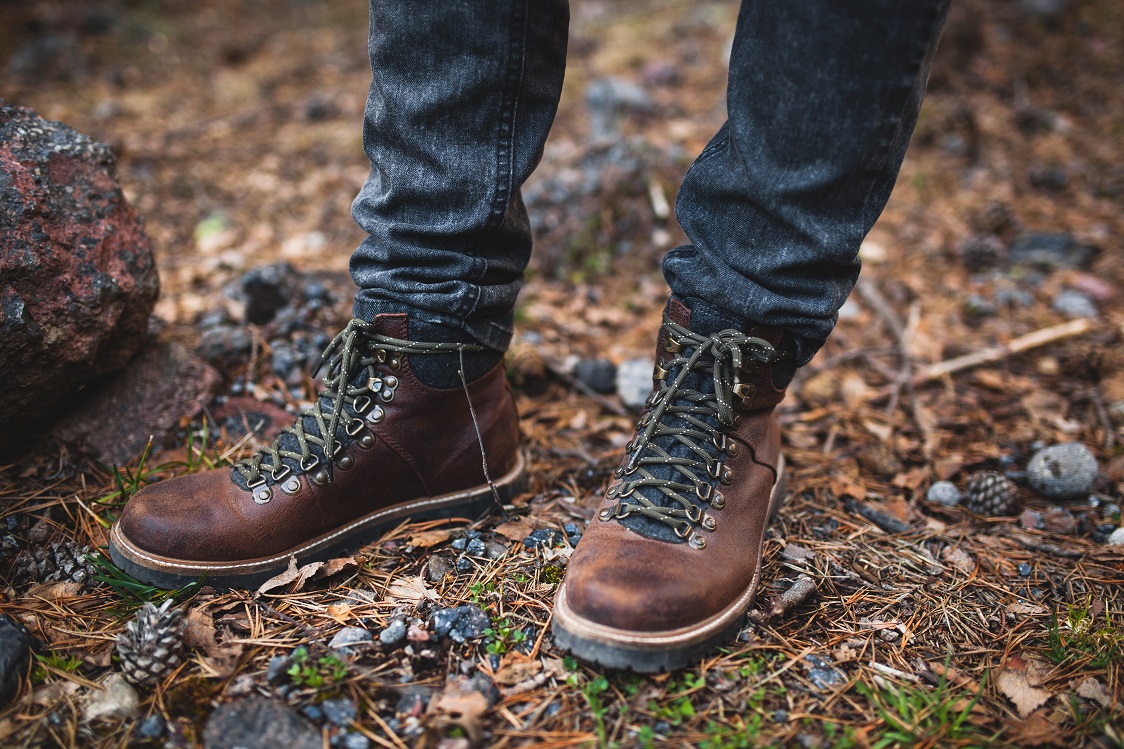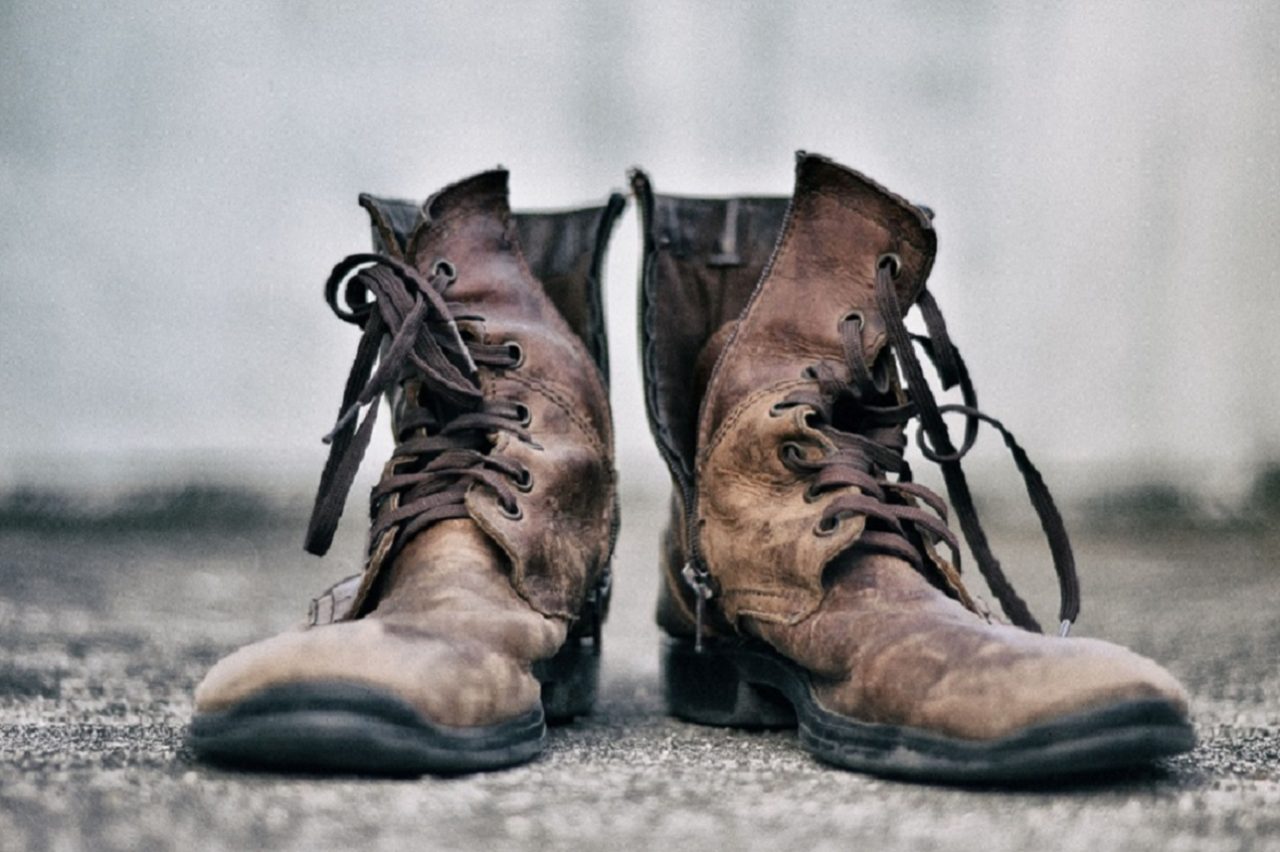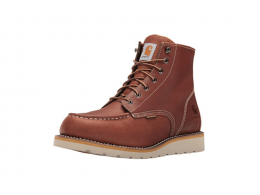Workwear Guru is reader-supported. When you buy through links on our site, we may earn an affiliate commission. Learn more
When in search of your ideal pair of work boots, you’ll most likely come across two primary types: wedge sole and heel work boots. The sole of a boot makes a significant impact on durability, maintenance, and function. Therefore, the best way to pick work boots is to consider the types of outsoles that will keep you comfy throughout the day.
This guide will show you the main differences between these boots soles to easily decide which type works best for you.
What Are Wedge Soles?
A wedge sole covers the entire length of your shoes’ outsole. That means you have one solid piece of rubber (or other material) from heel to toe, allowing you to have a wider contact surface area with the ground.
Unlike a heel sole, there is no gap between the heel and the toe, offering greater support under the arches of your feet and a more pleasant experience overall.
Wedge soles pros and cons
Just as any other type of boots, wedge sole work boots have their pros and cons. That’s why it is normal to have questions such as, are wedge sole boots more comfortable than other sole types?
On the pros side, wedge soles’ larger surface area allows distributing pressure more evenly when walking. This makes your daily experience much more pleasant and reduces stress on your back and knees in the long run.
In addition, wedge soles are more lightweight compared to heel soles. The reduced weight is more comfortable, allowing you to stand for long periods without causing as much fatigue.
A further advantage of wedge soles is that they track less dirt. The treads on the bottom of wedge soles aren’t as deep, so they don’t accumulate as much dirt or debris, making them very easy to maintain.
On the cons side, however, wedge soles provide less traction on uneven surfaces due to the lack of lugs. The most significant disadvantage here is that it allows for less grip, especially when you’re not on a hard, flat surface.
In addition, wedge soles tend to wear out more quickly. You may not even be able to re-sole them, depending on how they were initially manufactured.
When to choose wedge sole boots?
One of the essential wedge sole work boots benefits is that they offer more contact with the ground due to their relatively flat bottom and thin tread, reducing stress on your back and knees. Moreover, wedge soles don’t cause a mess as they provide less tracking when working in muddy places since they do not have deep channels that allow dirt to attach to the bottom of the boot.
Wedge soles are ideal for construction, farming, ironwork, carpentry, asphalt paving, and other jobs that require you to work on hard surfaces. You can wear wedge sole boots regularly since you don’t have to be doing anything physically challenging to take advantage of wedge sole boots.
What are Heel Work Boots?
A heel sole boot is essentially a work boot with a heel. Heel work boots have thick rubber soles with a slight heel elevation that leaves a gap between the midsole and the ground. While this means less contact with the surface, it also offers improved traction and stability on various surfaces.
Heel work boots pros and cons
The main advantages of heel work boots are their strong lugs and precisely designed treads that hold the grip on any terrain; therefore, heel work boots provide increased traction on uneven ground. This is especially crucial for persons who operate outside in various climates and terrains regularly.
Compared to a wedge sole, the treads on the sole and the elevated heel provide better stability. When climbing ladders, the heel allows you to “lock” yourself in place. Furthermore, the soles’ thickness ensures its long-term endurance.
On the other hand, the main disadvantage is that heel work boots can be heavier and less comfortable than wedge sole boots.
In addition, since your weight is less equally distributed, and your feet have two pressure points: one on the heels and the other in the ball of your foot, your feet will feel more pressure.
When to choose heel work boots?
Heel work boots are durable, practical, and can hold toes well. These advantages make heel work boots favorable in avoiding tripping hazards since the mod will get attached to traction. Heel work boots are also more sturdy since they have wide lugs and carefully created treads to keep a firm grip on any surface.
Such composition and design make heel work boots ideal for individuals who work outside in varying terrain. When heel work boots are mentioned, construction workers, linesmen, loggers, pipeliners, electricians, pole climbers, traffic points, and more occupations come to mind.
Wedge Sole vs. Heel Work Boots
At this point, you may be asking who will win the wedge sole vs. heel work boots battle? Sadly, we cannot pronounce a winner.
The two types of outsoles are made for different purposes, and when one works well for a situation, the other works in another. Wedge soles are designed to operate on hard, flat surfaces such as a warehouse floor, a paved road, or a sidewalk. On the other hand, heel soles are made for climbing ladders or working on rugged, uneven terrain.
A wedge outsole provides greater contact with the ground due to its relatively flat bottom and shallow tread. This provides for more friction on a hard, flat surface, as well as a more even distribution of your foot’s weight for improved cushioning and shock resistance. Wedge soles are ideal for warehousing and delivery jobs, indoor construction, service workers, and tradespeople.
In contrast, a pair of heel work boots has more grooves and lugs for digging into the ground or bracing against rocks and other protrusions from the ground than a wedge sole. As a result, these boots are great for outdoor labor, especially in rural and remote regions.
Because the heel grips against the ladder’s rungs, the heel work boots provide stability and safety on a ladder. As a result, foresters, loggers, linemen, agricultural laborers, tower workers, and many other construction employees will benefit from heel work boots.
Which Sole is Good for You?
Both wedge sole and heel work boots have advantages and disadvantages; therefore, you have to know everything about them before deciding which one you want to purchase. Before deciding which type to pick, you should carefully consider which one best fits your work since different boot soles are designed for different work environments.
Now, using all the tips and pieces of advice provided in this guide, it is up to you to decide who is victorious in this wedge sole vs. heel work boots battle.











